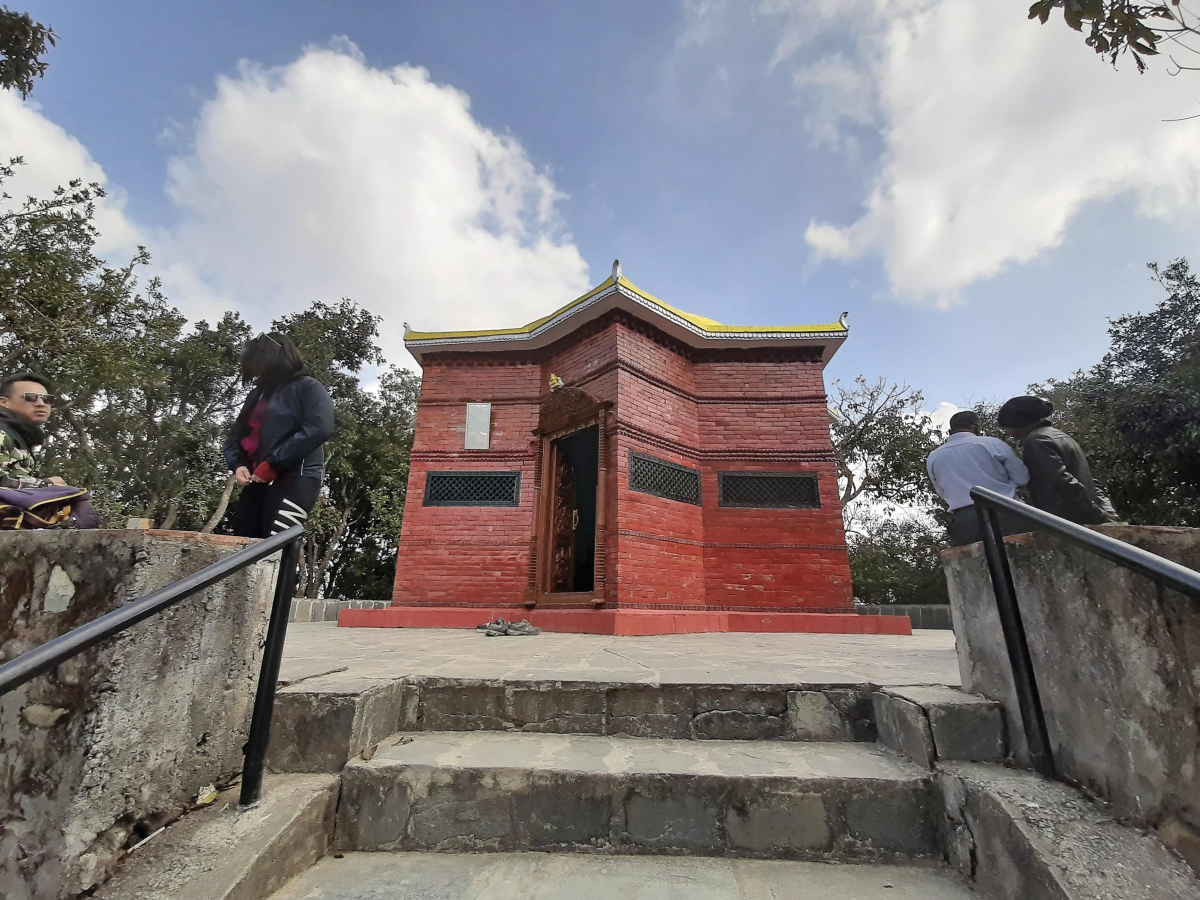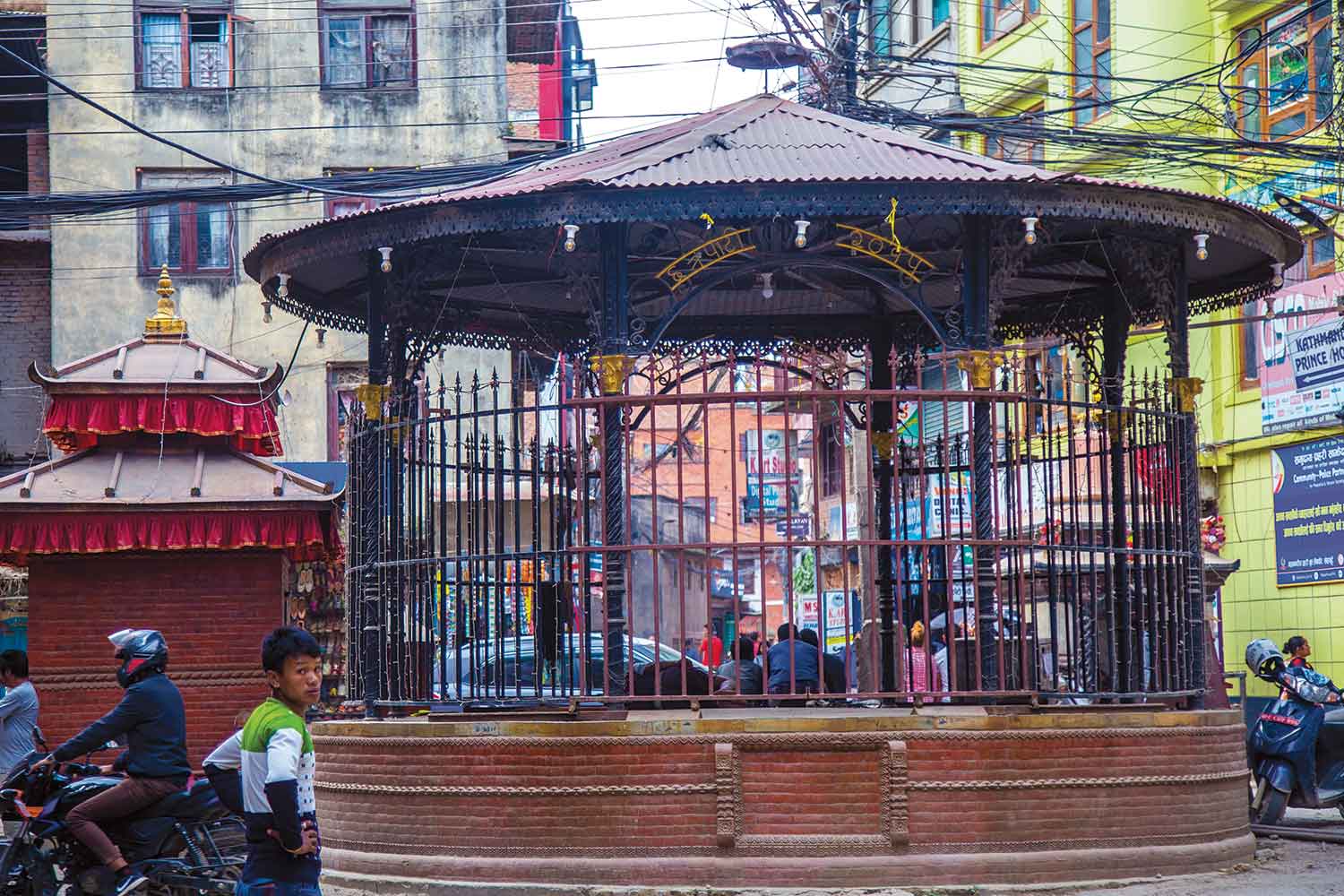
Some nights when it is very quiet, as most nights are in Manang, perhaps you will hear him, but I doubt you will see him. He stalks the villages of the Nyeshang Valley, but though he occupies our world, he is not of it. According to the book, Stories and Customs of Manang, “He is not like an ordinary human being. He only has one real leg and uses a wooden leg. People believe he is from a different planet. He only travels around after midnight and is rarely seen – but he can see us.” He is called Metyelat Atabha. The one “not supposed to take a name.”
I spent the majority of April this year in the village of Manang and the greater Nyeshang Valley studying local festivals, stories, and myths. In recent decades the region has gained significance as a major trekking hub, but its stunning natural beauty can divert one’s attention from its equally rich religious and cultural tradition. Sacred lakes and caves dot the landscape, and I was drawn to the religious stories associated with them. Of these I found many. At the same time, however, I was drawn to something more impish. Metyelat Atabha, as he is wont to do, snuck up on me and pulled me in.
Whenever I mentioned Metyelat in Manang, I was always greeted by a big laugh or a smile. He is a popular local character that everyone seems to know – a myth, a legend, a rascal. If one of my interviews on religious stories was stalling or a certain line of questioning was not panning out, I always had an ace up my sleeve. If all else failed, I could play the Metyelat card.
The exact details varied from person to person, but the picture of Metyelat Atabha that formed from numerous oral accounts was one of a mischievous character – a smelly one-legged thief. On my first day in Manang I asked my co-researcher Tsering, a native of Manang, what she knew about Metyelat Atabha. At first, she looked a little confused, but then I saw the flash of recognition in her eyes as she let out a laugh and called my host, Phunjo, over so they could countercheck their stories. Phunjo said Metyelat eats many eggs and drinks a lot of milk. Tsering colorfully added that his feces are green and smell of rotten eggs.
While many Manangpas now operate guest houses and restaurants for the trekkers who pass through the village, the traditional occupations of farming, herding, and trading are still an important part of daily life, as is the livestock. Goats, sheep, and yaks are all integral to daily life in Nyeshang, and so to a milk fiend like Metyelat Atabha, it is the perfect place to lurk. Phunjo said Metyelat steals the milk from the cows very early in the morning, so when Nyeshangpas go out to milk their cows – only to return empty handed – they know who to blame.
Phunjo said you cannot see Metyelat, but you can hear him: he makes a short high-pitched noise. “Te te te,” as Phunjo happily demonstrated. The most common element of Metyelat’s story, that everyone related to me, is how people in Manang exploit Metyelat’s thievery to enrich themselves. As Phunjo explained, if you steal his wooden leg and place it on a high shelf out of the two-foot-tall Metyelat’s reach, then he will steal gold, buckwheat, flowers, and anything else he can find and make a climbable mound out of, to try and reach the top shelf. However, whenever Metyelat goes out to steal more, the owner takes the loot for themselves, thus destroying the mound. Metyelat will keep rebuilding it over and over to try and get his leg, with the family becoming rich in the process. Tsering nodded along. She had also heard most of these stories from her friend in another Nyeshang village, Pisang, and that is where she thinks the Metyelat myth began.
The next day, Tsering and I were walking down the main road in Manang when we saw three old men and the village’s resident lama, Lama Kunsang, sitting on benches next to the chorten that marks the beginning of the residential part of Manang. I start by asking them about the history of Manang and who first came to the Nyeshang Valley. Brushing off my question, they laugh and say they do not know. One of the men said someone else came three or four days ago and asked a lot of annoying questions, and as a result they are hardly eager to answer mine. Trying to pivot to something more fun, and hopefully less annoying, I play the Metyelat card. This sparks discussion. One recounted, “he is a little boy with oily hair. His one leg is wooden and the other faces backwards.” Lama Kunsang shook his head dismissively and drew nearer. He sat next to me and stressed that Metyelat is not a little boy at all. He is “not like us;” he is a demon. Metyelat eats and smells of eggs and sometimes wears white clothes.
One man laughed when I asked about Metyelat. Before telling me his version of the story he prefaced it by saying, “It’s a myth, you know”. He has also heard that Metyelat is a little boy. He is very fond of milk, puts a lot of oil in his hair, and walks with a stick.

Chiaek, the caretaker for Manang Gompa, explained that while, yes, Metyelat is a myth now, he was believed to have lived in a previous Kalpa (a Sanskrit word used in Hindu and Buddhist cosmology to mean an aeon; in this colloquial context I believe Chiaek used it to simply mean a very long time) when zombies plagued Manang. These zombies menaced the whole Nyeshang Valley and it only took the breath of one to turn you, no brain gnawing required. The only way to stop the dead from coming back was to break their necks and tie their arms to their legs so they could not get back up and walk. Another strategy for keeping the zombies at bay was to make all the door frames very low. The zombies could not bend their knees so when they tried to enter they, instead, repeatedly hit their heads on the door frame. Many of the old homes in Manang still have these low door frames, and I followed the zombies’ example more times than I can count (my inability to count the number of times I hit my head might stem from a brain injury inflicted on me by said door frames or, perhaps, the frequency of it is a sign I carry some zombie blood in me).
The door frames may have thwarted the zombies, but they were no obstacle to the short-statured Metyelat. Chiaek also mentioned that Metyelat wears white and carries a stick in one hand, but apparently, he also carries a scythe in the other. Metyelat was able to be such a good thief because he had a very large hand in relation to his small body. This enabled him to purloin many valuable things. Chiaek says parents used to tell their children not to pick up rice with their hands because Metyelat would emulate them and steal huge clumps of rice with his gargantuan claw. However, if the children picked up the rice with a bowl or some utensil, Metyelat would emulate with his implement: a stick. Obviously, he would not be able to pick anything up with his stick, so their rice would be safe from the clutches of the naughty thief.
This story seems to teach an important lesson to children, namely about personal hygiene. But in general, Metyelat stories do not really serve as a framework from which to teach important lessons or morals to children. Sandra Benson, in her introduction to Tales of the Golden Corpse, a collection of Tibetan children’s stories, writes:
From one generation to the next, since the beginning of time, we have been listening to and telling stories. Folk tales in particular not only entertain but also help us understand each other, for it is the storytellers’ role to weave the moral fabric that holds our societies together. The adventures of whimsical, dastardly, and lovable characters mirror our own sense of justice: the unruly, cruel, and ungrateful are scorned while the compassionate and helpful are rewarded.
Metyelat transgresses these norms. He is a light-fingered rapscallion – a disgusting, if ultimately harmless, wretch. To the extent his thievery is punished, it is only by the thieving greed of Nyeshangpas themselves. No one ever talked about returning Metyelat’s stolen goods to their rightful owners; that does not seem to be part of the story. It was all fair game. People in Manang always shared a mischievous grin when I asked about Metyelat. It is the same grin that I imagine the little rascal himself wears. He is an outlet, in a religious and conservative society, for the transgressive streak that we all carry to some extent, and with some degree of relish.










